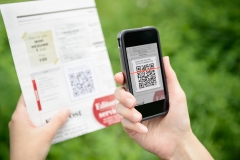Consumers are changing the ways they use digital platforms at lightning speed. To benefit, companies must take a refined look below the surface to understand who is doing what.
It’s hardly news that consumer behavior is changing fast—digital activities are growing rapidly in every sphere.1 Almost half of all video viewing in the United States, for example, takes place in ways that barely existed a generation ago—either time shifted (using digital video recorders or video on demand) or device shifted (onto laptop, tablet, or mobile-phone screens). Music is even more digital: upward of two-thirds of usage involves streaming services, MP3 files, or satellite radio. And mobile-phone usage has overtaken landline voice among every age group.
To benefit from changing consumer behavior, companies cannot rely only on headline numbers and the trends they suggest. Today, the dramatic reversals suffered at the hands of digital media—think of falling newspaper-ad revenues and the sales swoon of compact discs—may seem obvious or easily foreseeable. In reality, understanding and acting on the probable contours of change requires reflection and a deep knowledge of customer behavior, industry dynamics, and feedback loops. These insights can help players reshape their business models to exploit structural changes and cushion potential shocks.
Our experience is that within broad consumer movements, small groups of users (often overlooked in cursory analyses) actually drive the economics. Achieving a more refined understanding of who is doing what requires a thoughtful segmentation—incorporating data about consumers’ demographics, household characteristics, usage patterns, spending, attitudes, and needs—supported by “big data” analytics.
For example, in our iConsumer research,2 we identified four kinds of European mobile-phone users and their usage patterns. Our analysis illuminated that market’s underlying value-creation potential. We called consumers who largely use voice, even with their smartphones, traditionalists in our study. Data practicals use very little voice but lots of data. Data entertainers also use little voice but are heavy users of video, music, and games. Mobile omnivores are superusers of both voice and data services (Exhibit 1). While the omnivores and entertainers collectively represent just 23 percent of the population, they consume more than 85 percent of all data traffic—and pay roughly the same monthly service fees that the other two groups do.


